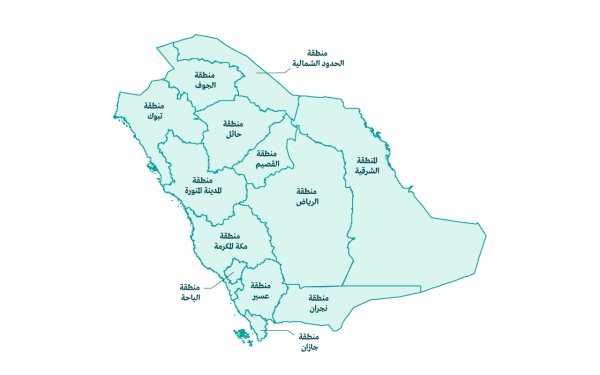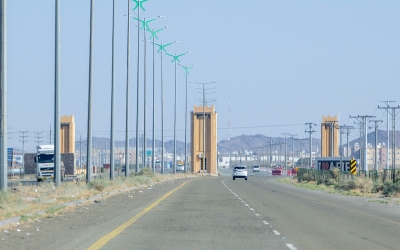

Administrative Divisions of the Kingdom of Saudi Arabia are the entities that collectively, in terms of geography and organization, form Saudi Arabia. These administrative divisions operate according to a unified law, which is based on the Basic Law of Governance.
Administrative divisions in Saudi Arabia
According to the Law of Provinces issued in March 1992, Saudi Arabia was divided, based on three administrative levels, into thirteen provinces, which were in turn divided into governorates and administratively governorate-affiliated centers, except for some centers that are directly related to the emirates of provinces. Administrative divisions in Saudi Arabia consist of thirteen provinces, which are further divided into 150 governorates, and 1,377 centers, while provinces enjoy the highest administrative authority. Each province has an administrative capital that constitutes the main unit of governance and includes the headquarters of the emirate.
Administrative divisions in Saudi Arabia were formed based on geographical, demographic, security, and environmental considerations, in addition to the transportation networks that connect the governorates.
Presidency of the Saudi administrative divisions
The Minister of Interior presides over the organizational structure of the administrative divisions in Saudi Arabia. Each province is headed by a governor appointed by a Royal Decree. The governor manages the affairs related to the law and public security, decides on the rulings of courts, guarantees the rights and freedoms of individuals, and provides government services in the province. By a Royal Decree, a deputy at the highest (excellent) rank represents the governor during periods of absence.
According to the Law of Provinces, new governorates can be organized in Saudi Arabia by a Royal Decree. The centers, however, can be established by a decision of the Minister of Interior, following a proposal by the province's governor.
Every emirate enjoys governmental sovereignty over a specific geographical area. However, an emirate is not eligible to enact laws and legislation. Its competence is limited to applying the Basic Law of Governance in Saudi Arabia.
Until 1992, before the issuance of the Law of Provinces in Saudi Arabia, the latter was administratively divided into nine provinces.
Development and royal authorities in Saudi Arabia
Several development authorities are established in Saudi Arabia, including the Sharqia Development Authority, Madinah Region Development Authority, Hail Region Development Authority, and Aseer Development Authority. Authorities collaborate with the emirate to manage the developmental and urban fields, and they are organizationally linked to the Prime Minister. Moreover, Saudi Arabia includes four royal commissions, which are government entities that have legal personality and financial autonomy, each one operating in accordance with its responsibilities and competence. They are as follows: the Royal Commission for Riyadh City, the Royal Commission for Makkah City and Holy Sites, the Royal Commission for Jubail and Yanbu, and the Royal Commission for al-'Ula.
In October 2015, the administrative regulation of the emirates of provinces was amended to include, within its organizational structure, women's offices in the administrations of the provinces.
Related quizzes
Related articles

